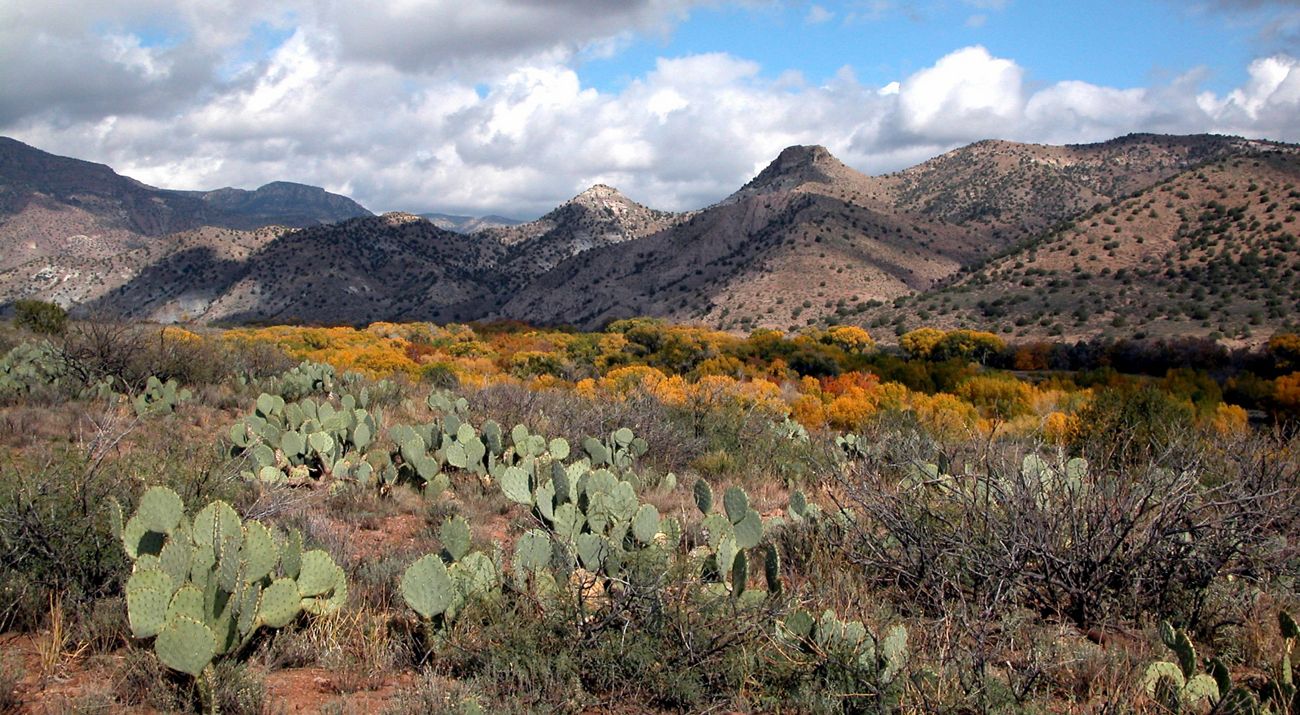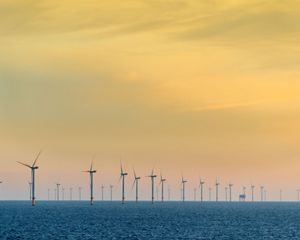Clean Energy in New Mexico
Newly passed legislation moves New Mexico to 100 percent clean energy by 2045.
The newly enacted Energy Transition Act (SB 489) is a promise to our planet, to our health and to future generations of New Mexicans. The Energy Transition Act places New Mexico at the forefront of tackling climate change in the United States, which requires the state to shift to 100% carbon-free energy by 2045.
Several interim goals will hasten New Mexico’s move from being a relatively coal-heavy state to producing carbon-free energy by 2045, including:
- Shutting down New Mexico’s last polluting coal plant, the San Juan Generating Station, by 2022.
- Mandating that electricity providers supply New Mexico with a 50% carbon-free energy mix by 2030.
- Requiring that 80% of the state’s energy be renewable by 2040.
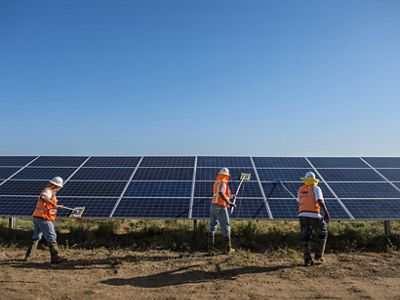
Download
-
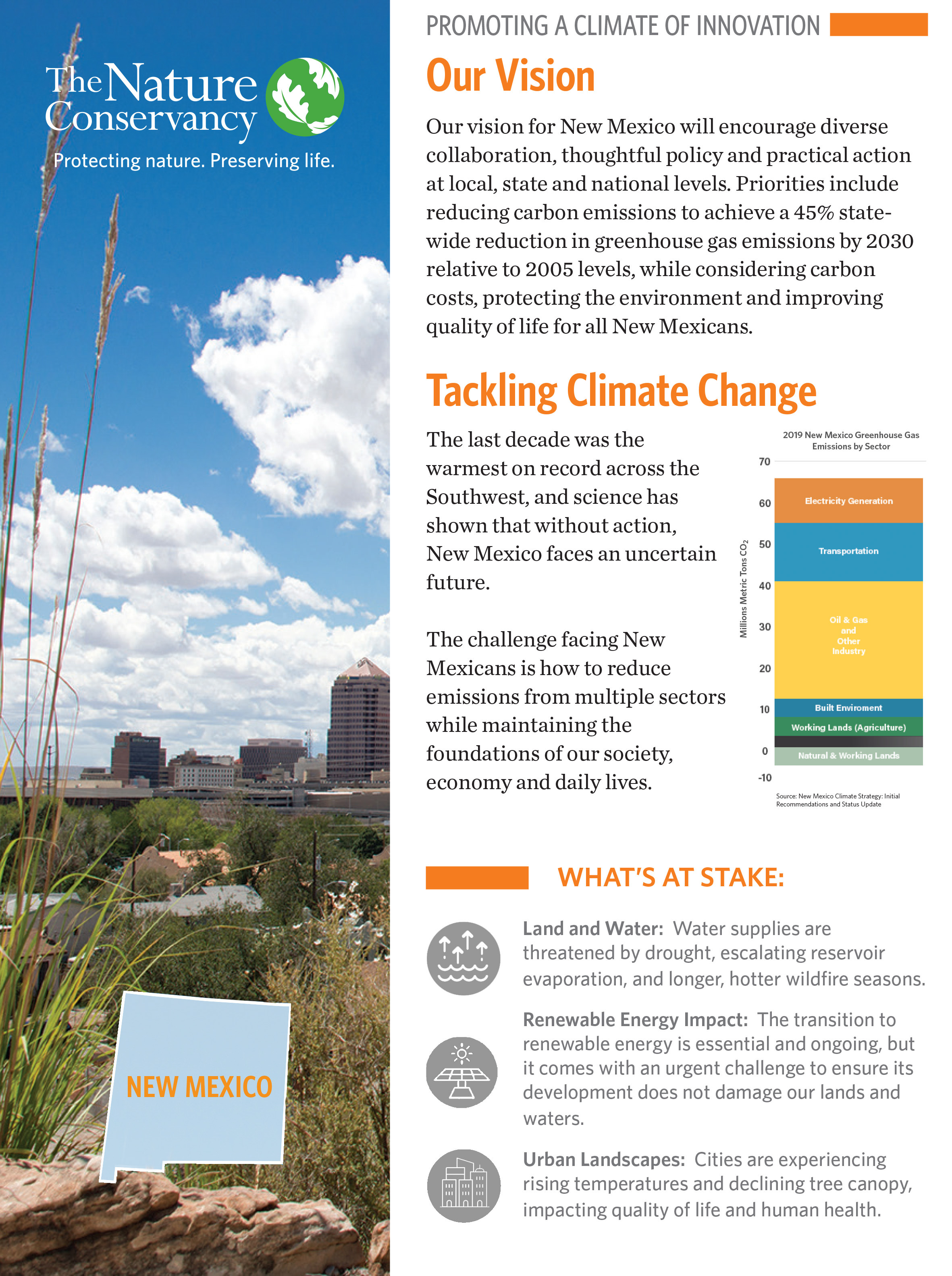 Factsheet: Tackling Climate Change
Factsheet: Tackling Climate ChangeSee where we stand on science and collaboration by downloading our new factsheet on clean energy and natural climate solutions in New Mexico
DOWNLOAD
Quote: Terry Sullivan
With advances in renewable energy and the positive impacts it can have on both our economy and living planet, now is the time for our state to make this transition and work to avert the worst possible effects of climate change.
What the Energy Transition Act Means for New Mexico
We believe the Energy Transition Act is critical, as it decisively addresses our carbon emissions and our collective fight against climate change, which threatens to severely degrade our lands and waters and trap us in an intensifying cycle of scarcity.
“With advances in renewable energy and the positive impacts it can have on both our economy and living planet, now is the time for our state to make this transition and work to avert the worst possible effects of climate change,” said Terry Sullivan, State Director of The Nature Conservancy in New Mexico.
In addition to confronting climate change, the Act also considers New Mexico’s communities and economy. It includes $40 million for new economic development funding and retraining for plant and mine workers in San Juan County. To ensure local schools receive property tax revenue from energy development, it also directs that hundreds of millions of dollars of replacement power be sited in the Four Corners area after the San Juan Generating Station closes.
“The Energy Transition Act will absolutely challenge PNM, and we know we can meet this challenge head-on by working with our Governor, legislators and environmental advocates,” said Patrick O’Connell, Director of Planning and Resources at the Public Service Company of New Mexico (PNM), the state's largest utility. “This landmark bill provides the pathway for New Mexico to become a national leader in sustainable energy, while supporting our communities during this inevitable global energy shift.”
This year’s legislative session—held from January through mid-March—was one of the most significant in the history of New Mexico, with nearly 40 renewable energy bills making their way through the legislature. Most activity on energy policy in the United States is at the state level, and the environmental legislation passed this year, including the Energy Transition Act, will help New Mexico diversify its economic base and take action on climate change.
“Positioning New Mexico as a leader in clean energy is smart and necessary to promote economic development, provide job opportunities and apprenticeships for young people and live in harmony with the natural environment,” said Representative Andrea Romero, who voted in favor of the Act. “Both wind and solar energy are a clear path forward to making New Mexico’s economy and communities stronger.”
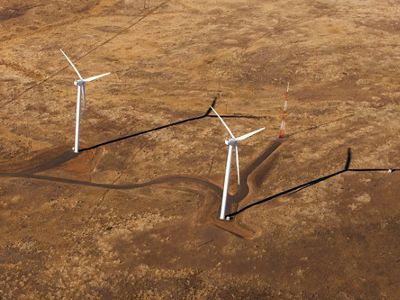
A Bipartisan Effort
The Nature Conservancy regularly engages clean energy partners—from lawmakers to utility companies and environmental organizations—and recently held a Clean Energy Workshop in Albuquerque, NM to help educate and motivate state leaders.
A bipartisan group of 30 state legislators attended the workshop to gain the tools necessary to debate and enact clean energy legislation. Expert policy faculty from Colorado State University’s Center for New Energy Economy (CNEE) addressed a variety of issue areas: energy storage, grid modernization, renewable energy and electric transportation.
Former Colorado Governor Bill Ritter, Jr., founder and director of CNEE, and Dr. Dan Arvizu, Chancellor of New Mexico State University who has a distinguished career in advanced energy research and development, discussed the principles of bringing together diverse constituencies to have a positive conversation about energy alternatives. Their discussion focused on the enormous opportunities for the growth of clean energy in New Mexico and its environmental and economic benefits, including making the state more competitive on a national level.
Faculty also presented resources like the State Policy Opportunity Tracker (SPOT) for Clean Energy, a 50-state clean energy policy gap analysis; the Advanced Energy Legislative Tracker, a database that tracks all introduced state clean energy legislation; and the Clean Energy Policy Guide for State Legislatures, a guide that outlines key policy design.
After a successful workshop and two-month legislative session, it is clear that New Mexico is ready to transform its energy future.
Download Our New Fact Sheet on Clean Energy and Natural Climate Solutions
Workshop Presentations
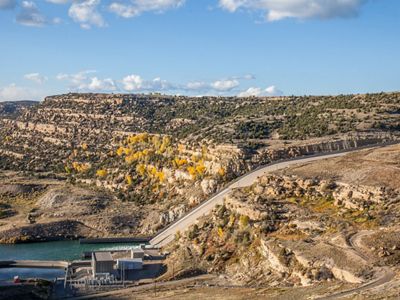
Join the Fight Against Climate Change
If unaddressed, climate change will dramatically affect future generations in New Mexico and across the globe. With your support, we can build upon the progress we’ve made to date. The time to act is now.
